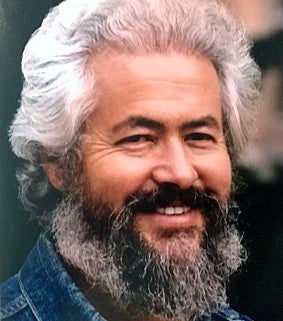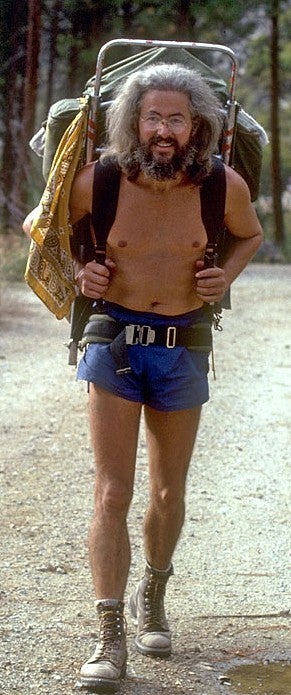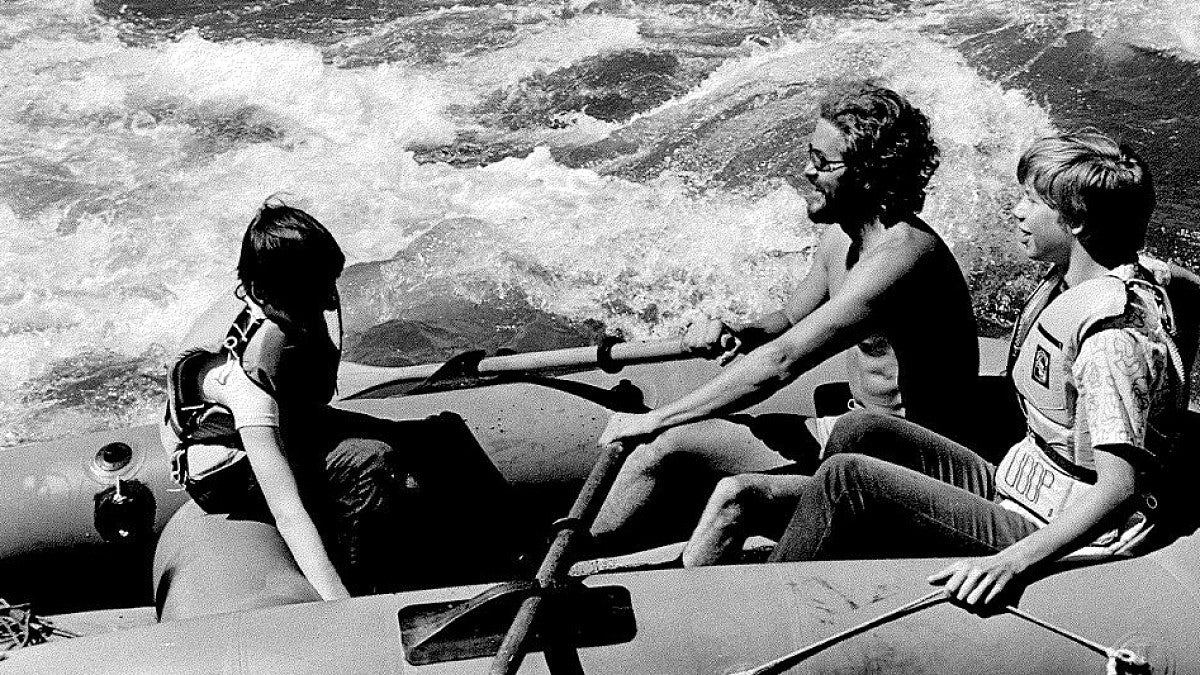Way back in 1967, Gary Grimm had a radical idea for a new type of outdoors program.
It would be leaderless — the trips, the organization, the whole works. No officers. No meetings. No minutes. Anyone planning on going on an outing wrote their trip on a trip sheet and posted it on a bulletin board in the Erb Memorial Union.

It all traces back to Gary Grimm, who died Jan. 22 at the age of 78 from what is believed to be a heart attack.
“He was very definitely a visionary,” said Bruce Mason, who joined Grimm on many of those trips in the program’s infancy and followed Grimm as its coordinator from 1980 until his retirement in 1999. “Before this, everything was very formal, leader led, authoritarian, a traditional approach.”
Under Grimm’s approach, those who wanted to go came along, and even the person who came up with the idea was merely a participant. It didn’t matter whether it was a leisurely picnic atop Spencer Butte or a climb to the summit of Alaska’s Denali.
Grimm came to the UO in the mid-1960s to pursue a doctorate in community service and public affairs that he hoped to apply in an environmental or recreational setting. But he also loved the outdoors and wanted to spend as much time in it as possible.
Sally Sharrard remembers hearing via word-of-mouth about a group of students planning to meet and brainstorm ways they could take more adventures together. It was dusk on a spring evening, and Sharrard joined them on the lawn just outside Allen Hall, where she had just finished working on the next day’s edition of The Emerald.
People at the gathering didn’t like the idea of an outdoor club, with dues and a leadership structure, and came around to the idea of a loose association of people sharing skills, equipment and ideas about outdoor recreation and education. The Outdoor Program was born.
“Gary’s idea was the spark,” Sharrard recalled.
It was the perfect time and place for such a concept. The Outdoor Program steadily attracted new participants, each bringing additional skills and equipment into the fold along with knowledge of places around Oregon they could share.
Grimm was its first coordinator, a position he created and held until 1980 to help facilitate and encourage participants to become involved, to take initiative with trips and projects. From its outset, they opened the group to students, staff, faculty and community members.
The program soon expanded into a seldom-used basement storeroom in the EMU. A 20-foot-long, 6-foot-tall bulletin board now held the trip sheets with all of the planned adventures.
“The sky was the limit,” Mason said. “We had expeditions to Mt. McKinley (now known as Denali), multiple trips to the Himalayas, Cuba, South America, you name it. From the easiest kind of trip to world class.”
That included the first-ever descent of Idaho’s Bruneau River.
“We were just kind of leaping off into the unknown for a five-day trip down an extraordinarily challenging river with a canyon that was impossible to get out of for miles at a time,” Mason said, the disbelief still evident in his voice. “Gary initiated that trip. I was a pretty inexperienced rafter at that time, but he could give advice without dictating, and that really opened my eyes.”
Katy Flanagan, who met Grimm through the Outdoor Program and would marry him in 1980, was on two expeditions to Denali.

But an official with the Department of the Interior also happened to be on the mountain during their 1976 adventure, and he connected with Grimm. Soon, he had Grimm in Washington to talk about the breadth of the debris problem on the otherwise pristine peak.
“There always had to be another purpose — cleaning something up, monitoring something — whenever he went on trips,” Flanagan said of Grimm’s many adventures. The couple in 1979 formed Mountain Visions, which created multimedia presentations for environmental groups and natural resource agencies, and he and Flanagan crisscrossed the nation giving presentations.
Grimm became so immersed in cultivating the Outdoor Program in its early days that he set aside his academic goals and focused on it instead, never finishing his doctorate.
Grimm and a few others traveled around the country to every college and recreational conference that would have them to share the benefits of their new program.
“We were pretty much out there pushing this concept,” Mason said. “We would have people come visit and see how it actually worked. They couldn’t believe we had such an active program with such minimal facilities and support.”
Grimm also realized the value of having diversity among the program’s participants and made a point to emphasize that from its start.
“Higher-end outdoor recreation was always male oriented,” Mason said. “A big part of Gary’s emphasis was to bring in nontraditional users. It was easily 50 percent female on the trips and with the trip initiators. There was some participation by minorities and international students. That was kind of ahead of its time.”
Those types of considerations by Grimm stuck with Mason and would shape his path.
“Gary has had a huge effect on the direction of my life to this very day,” Mason said. “I was a grad student when I stumbled into the Outdoor Program, and got so involved in it I ended up working for it for 20-plus years. He just gave me a wonderful, positive outlook on what people could accomplish together.”
Mason had a recent reminder of just how broad Grimm’s legacy is.
He was backcountry skiing at Santiam Pass when someone from a group of skiers catching up from behind called out: “Is that Bruce Mason up there?”
The fellow skier recognized Mason from the Outdoor Program. While they were chatting, another group came upon them. Sure enough, some of those folks also once participated in the Outdoor Program.
Here they were, on a snowy trail in the middle of the Cascades, all with a connection through a program started by a visionary doctoral student 51 years ago.
—By Jim Murez, University Communications


